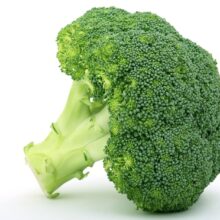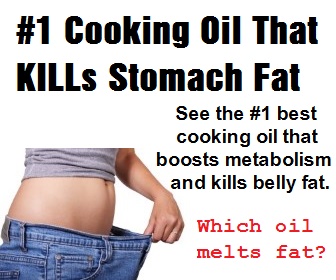Demystifying Weight Loss: The Science Behind Your Body’s Fat Burning Process

Introduction:
Weight loss is a topic that has fascinated individuals around the world for ages. Many people strive to shed pounds, whether it’s for health reasons or to achieve their desired body image. However, the process of losing weight is often shrouded in mystery, leading to confusion and frustration.
In this comprehensive article, we aim to demystify weight loss by exploring the intricate physiological mechanisms involved in the body’s fat-burning process. We will delve into key factors such as metabolism, calorie deficit, and the roles of exercise and diet. By providing relevant scientific studies and expert opinions, we will shed light on how these factors interact and contribute to successful weight loss. Additionally, we will offer practical tips and strategies to help readers achieve their weight loss goals, emphasizing the importance of a sustainable and holistic approach.
Understanding Metabolism: The Engine Behind Fat Burning
Metabolism is often cited as a crucial factor in weight loss. It refers to the complex biochemical processes that occur within our bodies to convert food into energy. Our metabolic rate determines the number of calories our bodies burn at rest, known as the basal metabolic rate (BMR). In simpler terms, metabolism is the engine that drives our fat-burning process.
Several factors influence metabolism, including age, genetics, and body composition. For instance, individuals with more lean muscle mass tend to have a higher BMR due to muscle’s higher metabolic activity compared to fat. While we cannot control certain aspects of our metabolism, we can adopt lifestyle habits that optimize its efficiency.
Calorie Deficit: The Fuel for Fat Burning
To lose weight, one must create a calorie deficit, which means consuming fewer calories than the body needs for maintenance. This deficit forces the body to tap into stored energy, primarily fat, to make up for the shortfall.
A calorie deficit can be achieved through a combination of reduced calorie intake and increased physical activity. Numerous dietary approaches, such as low-fat or low-carbohydrate diets, have been popularized for weight loss. However, research suggests that the most effective approach may be finding a balance that is sustainable and tailored to individual preferences and needs.
The Role of Exercise: Igniting the Fat-Burning Process
Exercise plays a crucial role in the fat-burning process. While diet alone can result in weight loss, exercise offers numerous benefits that amplify fat burning and promote overall health. Aerobic exercises, such as jogging, swimming, or cycling, increase heart rate and enhance the body’s ability to use oxygen during prolonged activity. This leads to a higher calorie burn and increased fat oxidation.
Furthermore, strength training has been shown to increase muscle mass, which in turn elevates the BMR. The more muscle mass you have, the more calories your body burns even at rest. Combining cardiovascular exercise with strength training provides a powerful one-two punch for fat burning and long-term weight maintenance.
The Dual Power of Diet and Exercise
While diet and exercise are powerful tools for weight loss individually, their combined impact is even greater. A study published in the New England Journal of Medicine demonstrated that participants who adopted a combination of calorie restriction and increased physical activity achieved more significant weight loss compared to those who relied on diet alone.
However, it is important to note that the quality of the diet matters. A diverse and nutrient-rich diet can optimize metabolism, preserve muscle mass, and provide the necessary fuel for exercise. A balanced diet should include ample fruits, vegetables, lean proteins, whole grains, and healthy fats. Fad diets promising quick fixes often fall short because they are not sustainable and often lack essential nutrients.
The Importance of a Sustainable and Holistic Approach
Successful weight loss is not just about shedding pounds quickly; it is about adopting a sustainable and holistic approach that promotes long-lasting changes. Crash diets or extreme exercise regimens may lead to rapid weight loss initially but often result in rebound weight gain or other negative health consequences.
Instead, focus on gradual and realistic weight loss goals. Aim for a calorie deficit of 500 to 1000 calories per day, which typically results in a safe and sustainable weight loss of 1-2 pounds per week. Establish healthy habits, such as regular physical activity and mindful eating, that can be maintained in the long term.
Real-Life Examples and Success Stories
To illustrate the effectiveness of a sustainable approach to weight loss, we can look at real-life success stories. Individuals who have lost weight and maintained their successes emphasize the importance of finding balance, incorporating enjoyable physical activities, and creating a positive relationship with food.
For example, John, a 45-year-old office worker, managed to lose 50 pounds over the course of a year. He focused on making gradual changes, such as including more vegetables in his meals, reducing portion sizes, and walking for 30 minutes every day. By adopting realistic and sustainable habits, he not only achieved his weight loss goal but also improved his overall health and quality of life.
Conclusion:
Demystifying the science behind your body’s fat-burning process is a crucial step towards successful weight loss. Understanding the roles of metabolism, calorie deficit, exercise, and diet empowers individuals to make informed decisions and establish sustainable habits.
Remember, achieving weight loss is a journey that requires patience, consistency, and a holistic approach. By adopting a balanced diet, engaging in regular physical activity, and making gradual changes, you will be well on your way to shedding excess pounds and improving your overall well-being. Start your weight loss journey today and reap the benefits of a healthier and happier life.





